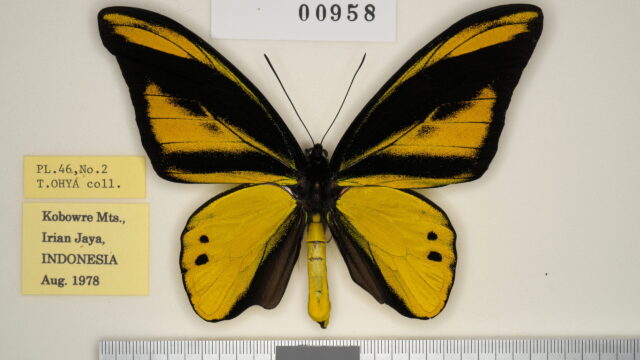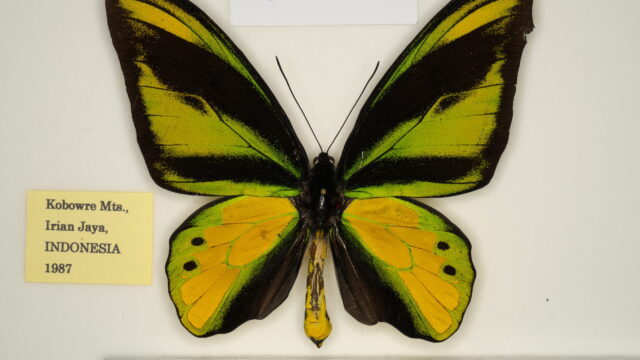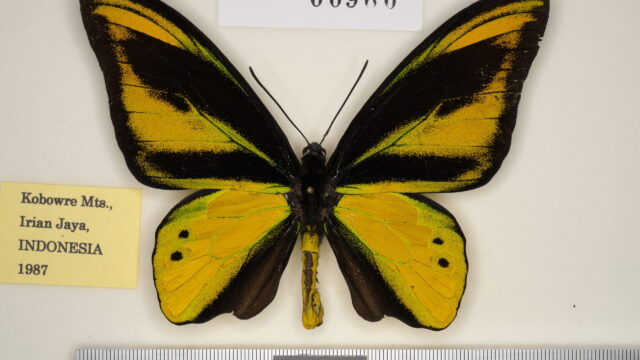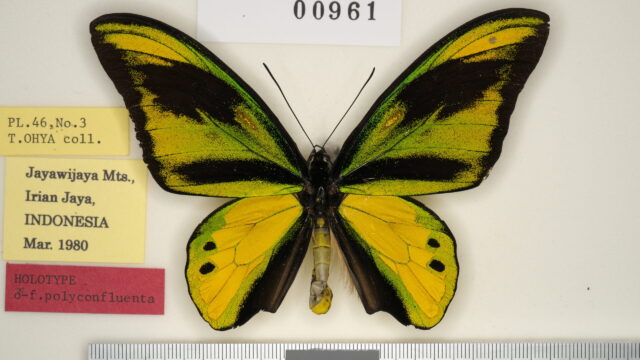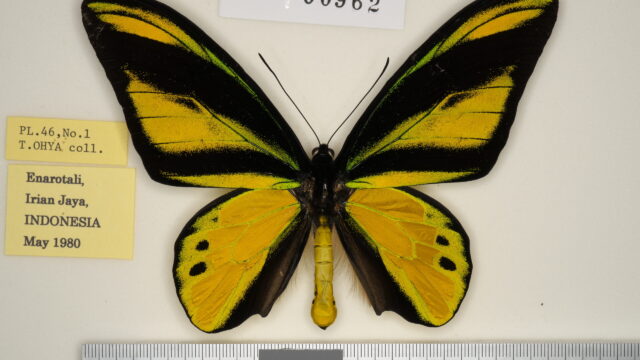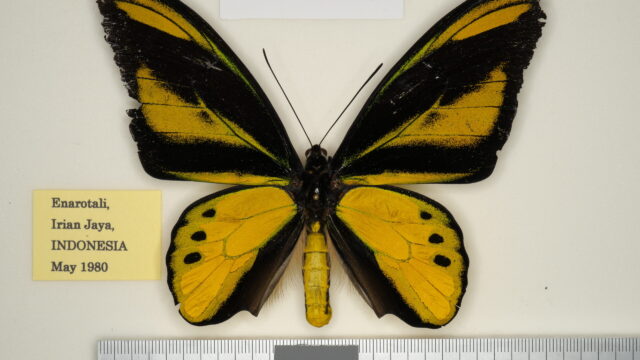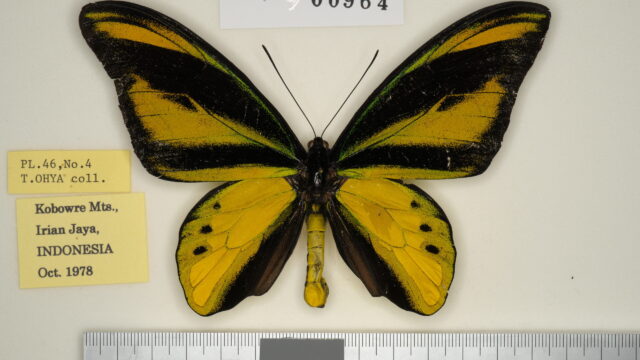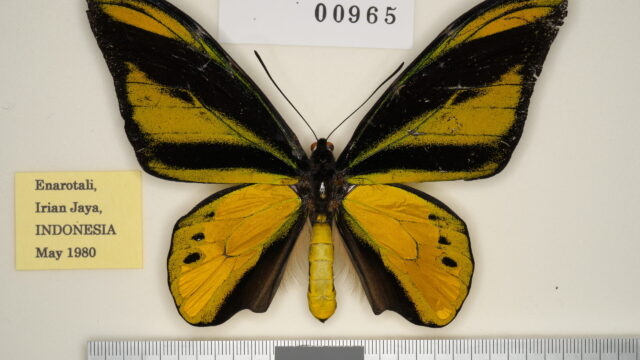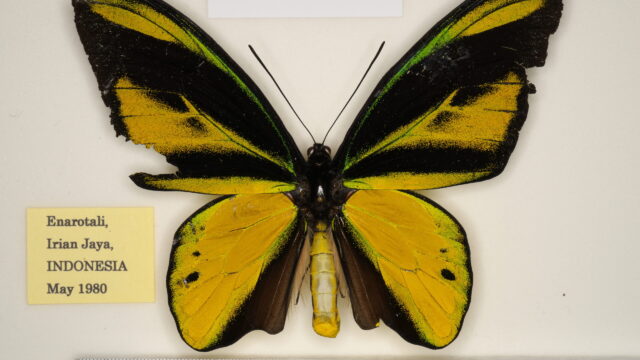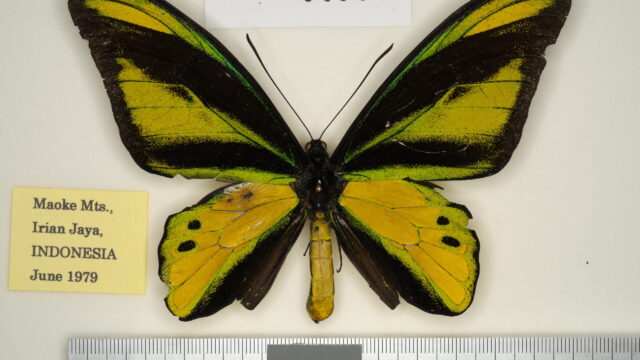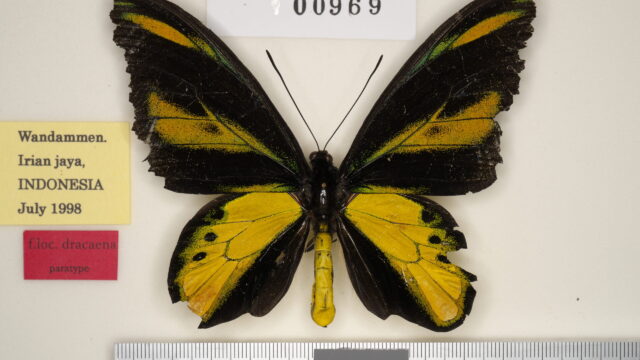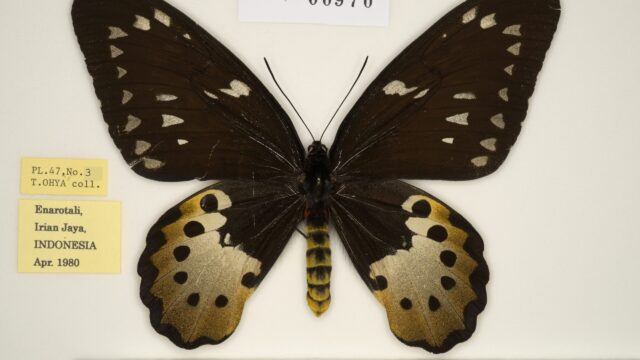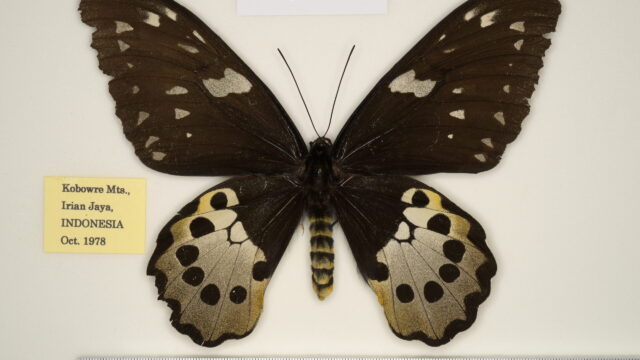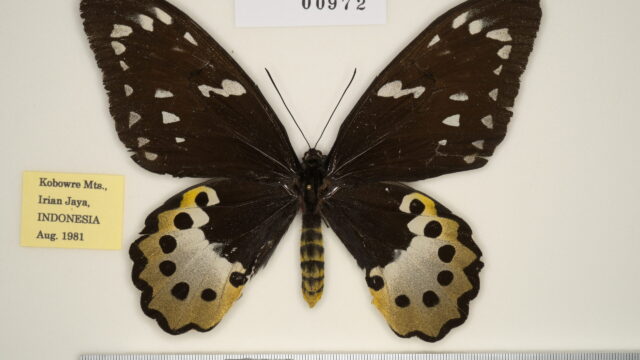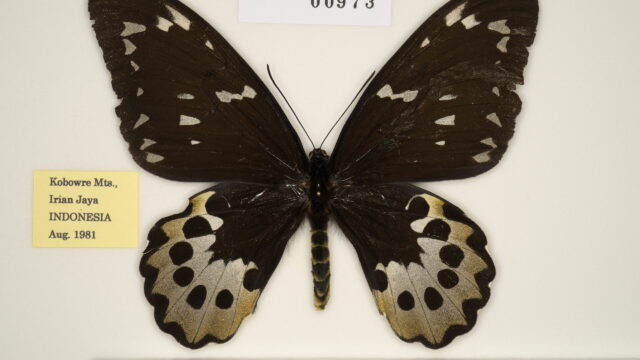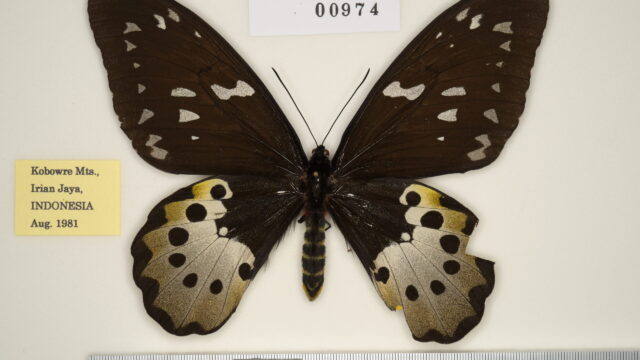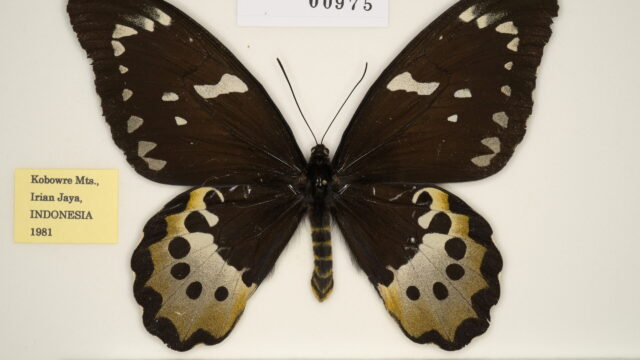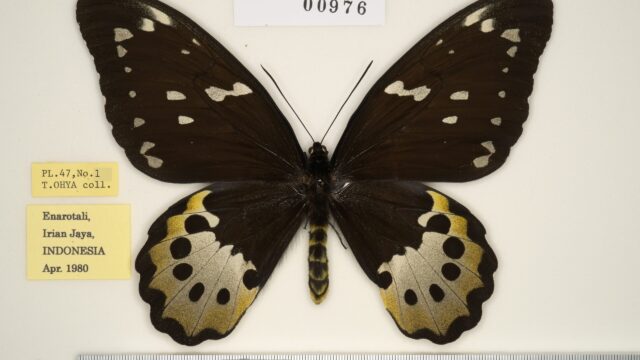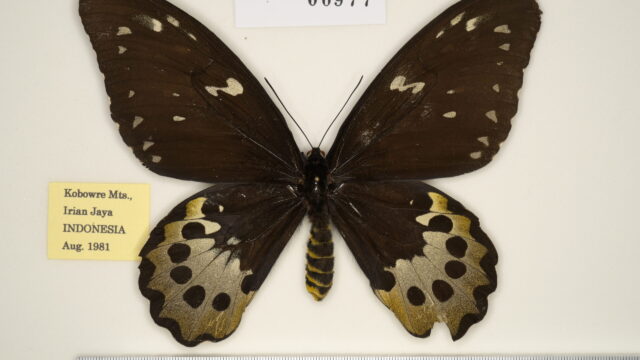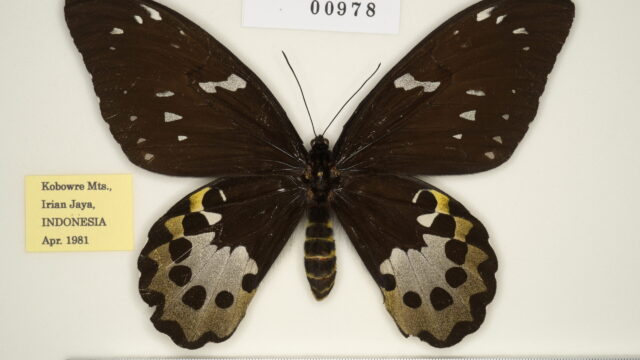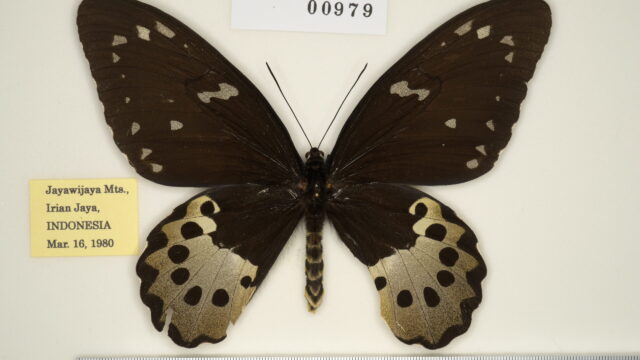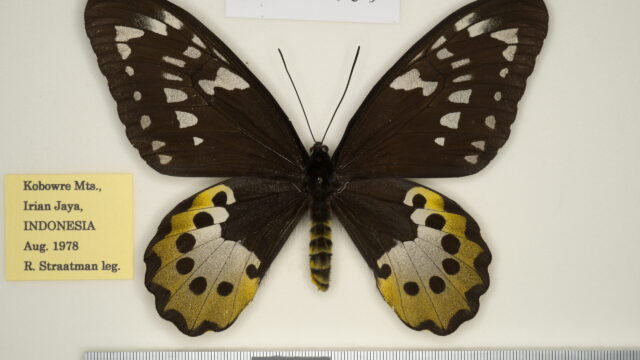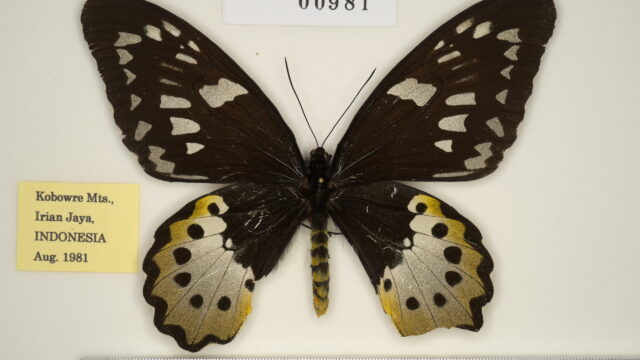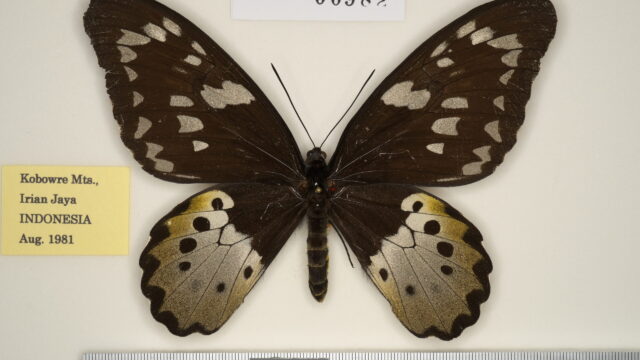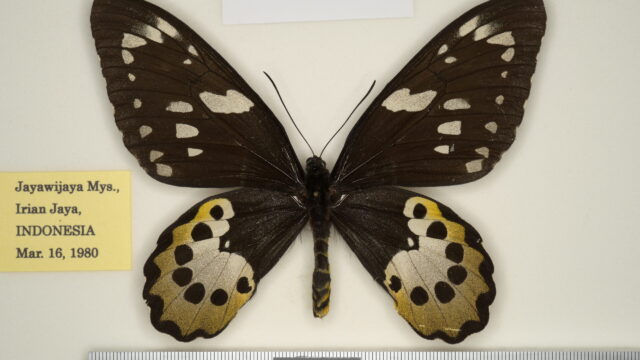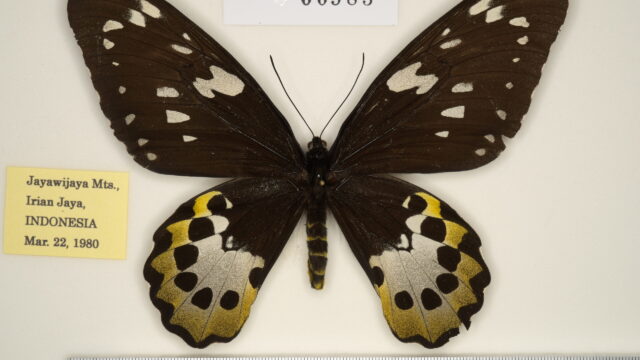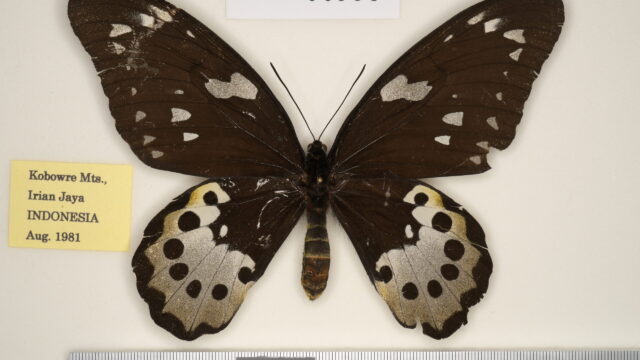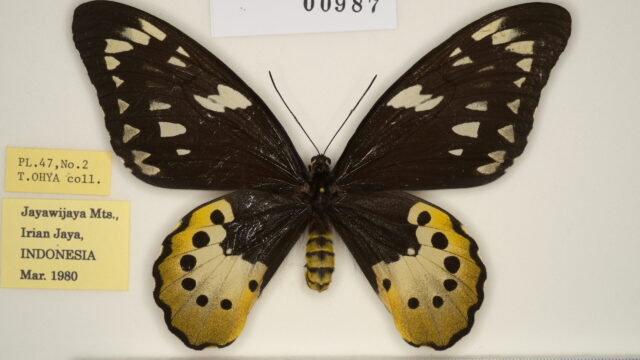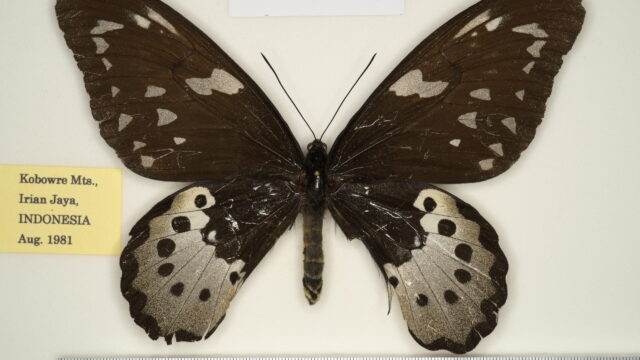2. Ssp. charybdis (van Eecke, 1915)15) [♀] [♂: dracaena (Joicey & Talbot, 1922)7)]
=dracaena (Joicey & Talbot, 1922)7) (Wayland Mts., Irian Jaya)
(Distribution) [Map 47]
INDONESIA [Irian Jaya] Lake Yamur area, Urema River basin, Hamuku, Nabire, Meno, Wanggar River basin, Kobowre Mts. (Mt. Sterren, Mt. Kunupi, Mt. Mapia), Siriwo River basin, Lake Paniai area (Enarotali), Upper Otakwa River basin, Jayawijaya Mts., Baliem Valley (Wamena), Angguruk. (Note: Type locality is listed Dutch (Central) New Guinea, but the exact location is unknown.)
(Episodes of discovery and original description)
The original description was given by R. van Eecke (1915). The specimen of 1♀ on which it is based was collected during the third Dutch expedition to Central New Guinea. He states, “1♀ captured by Mr. G. Versteeg in the explored territory on 25 Nov. 1912. It is a pity that the locality is not distinctly indicated.” The most plausible geographic locality is the Maoke (Snow) Mountains, where the species undoubtedly occurs. The subspecies name charybdis is a reference to Charybdis, the anthropomorphic sea whirlpool monster. On the other hand, dracaena was described as a new subspecies by Joicey and Talbot the following year in 1916, based on three ♀♀ specimens collected by the Pratt brothers. The ♂ specimen, also first described by Joicey and Talbot (1922), was collected by the Pratt brothers in June 1920 in the Dewaro tribe (Weyland Mountains, 3500 feet above sea level).
(Characteristics)
Distributed in the West (Irian Jaya) and is somewhat smaller than the nominotypical ssp. in the East (Papua New Guinea).
(Spotted pattern)
♂: FW iridescent green bands are more broadly and yellowish, especially the cubital band. On the underside, black streaks and spots are reduced and green area is broader. Semi-translucent golden spots on HW are larger and, as ssp. flavidior, extend to the outside from black discal spots in space 5 and 6 in many individuals.
♀: The ground color of the wings is blackish brown. FW is more prominent and narrower. The spots are white with little shade of gray. HW is also narrower and submarginal area is gray with less yellow.
(Variation)
♂-f. quinquemaculata Parrott & Deslisle, 198610): [Aberrant FW/HW pattern] On the FW, radial and cubital bands are feebly connected apically. On the HW, semi-translucent golden spots divided into two parts by transverse green area in spaces 3 and 4.
♂-f. polyconfluenta Ohya, 19839): [Aberrant FW pattern] Similar to above variation. Radial and cubital bands are connected apically, and anal and cubital bands also fuses at the tornus. Basal 2/3 of black area covering the cell forms a green teardrop-shaped area with a small semi-translucent golden spot.
♂-f. confluenta Haugum & Low, 19795): [Aberrant FW pattern] Cubital and anal bands are fused at the tornus, and then radial and cubital bands also fused apically. (➡chimaera )
♂-f. dioni Deslisle & Sclavo, 20083): [Aberrant FW pattern] FW with semi-translucent golden streaks subdiscally in cell and furthermore a golden streak running close and parallel to the cubitus at the level of space 3. (➡chimaera )
♂-f. sangnifluens Rousseau-Decelle, 193514): [Aberrant FW pattern] Large triangular, very dark reddish-brown scales scattered within FW cubital band, and it is also present in the middle area of anal band.
♂-f. manguini Deslisle & Sclavo, 20154): [FW/HW discoloration] All three iridescent bands (the radial, cubital and anal bands) bluish green basally on FW and an orange iridescence instead of the usual green on HW. (➡chimaera )
f. loc. dracaena (Joicey & Talbot, 1916)6) [♀] [♂: Deslisle, 20042)]
(Distribution) [Map 47]
INDONESIA [Irian Jaya] Wandammen Peninsula (Wondiwoi Mts., Wasior).
(Episodes of discovery and original description)
The first 3 ♀♀specimens were collected by A., C. and F. Pratt in November 1914 in the Wandammen Mts. (3000 – 4000 ft.), then Dutch New Guinea (=Irian Jaya), but the ♂ specimen was unfortunately not collected by a local collector. Joicey & Talbot described it as ssp. dracaena in 1916 based on only these female specimens. Six years later (1922), 6 ♂♂ collected in the Weyland Range, another mountain range, were assigned to the same subspecies as the previously named ssp. dracaena. However, since Zeuner (1943) made it a synonym for ssp. charybdis, it was never considered as a problem. Deslisle found a previously unknown specimen of ♂ from Wandammen Mts.(Wondiwoi Mts.) in the private collection of two researchers (Sclavo and Ohya) and upgraded it to a local form based on its green spots being much smaller than those of ssp. charybdis in 2004. Dracaena is named after the dragon’s blood tree, which is native of Africa.
(Characteristics)
The number of specimens collected is very small, probably less than 20 specimens in total, both ♂ and ♀. This f. loc. has been neglected for a long time but was redescribed as a ssp. chimaera f. loc. dracaena by Deslisle (2004), based on the matching characteristics of the two ♂♂ specimens (Sclavo, Ohya). Further searches are needed.
(Spotted pattern)
♂: All three iridescent green bands on FW are significant reduced, so black area is enlarged. The black marginal border on HW is also about twice as wide as in other subspecies.
♀: FW pale cell-patch more extended, while other spots are reduced. On HW, the cell-spot is more extended than other subspecies and widely framed with the ground color. Pale band also extended, yellow except for white cell-spot.
